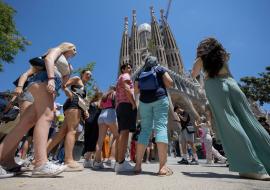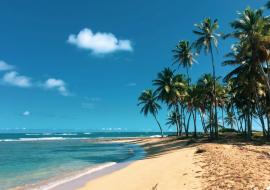Trinidad & Tobago Prepare for Annual Carnival
In 2009, Trinidad Carnival culminates on Feb. 23 and 24. Trinidad Carnival has been described by many as the one of the most colorful and culturally diverse pre-Lenten celebrations in the world.
Carnival was introduced to Trinidad by the French in 1783 in the form of elaborate masquerade balls thrown by plantation owners. Banned from the festivities, the African slaves would hold their own celebrations using rituals and folklore while imitating their masters’ behavior.
Once slavery was abolished in 1838, the freed Africans took their Carnival celebration to the streets and, as each new immigrant population entered Trinidad, a new flavor was added to the festivities. Today, the diverse culture of both islands has influenced the music, food and traditions of the festival.
The Kings and Queens Costume Competition will be held on Sunday, Feb. 22, and celebrates the costumes, weighing between 50 and 200 pounds. These costumes usually depict dragons that breathe fire, butterflies that bounce and flutter or insects with glowing eyes and antennas.
They are the leaders of each one of the masquerade bands and the costume competition for King and Queen is fierce. Designers spend months creating costumes that can reach up to 30 feet high and are usually attached to wheels, making mobility easier for the brave soul who will spend two days in it parading and dancing on the streets of Port of Spain.
On Monday, Feb. 23, J’Ouvert, the official start of Carnival, takes place before dawn. Revelers dress in old clothes and cover themselves in oil, grease, paint, chocolate and/or mud and parade through the towns and villages of Trinidad to the sounds of socca and calypso until the sun comes up.
On Monday, Feb. 23, and Tuesday, Feb. 24, masquerade bands consisting of thousands of people “jumping up” in the streets of Port of Spain. Band members wear glittery, colorful, scantily-clad costumes.














